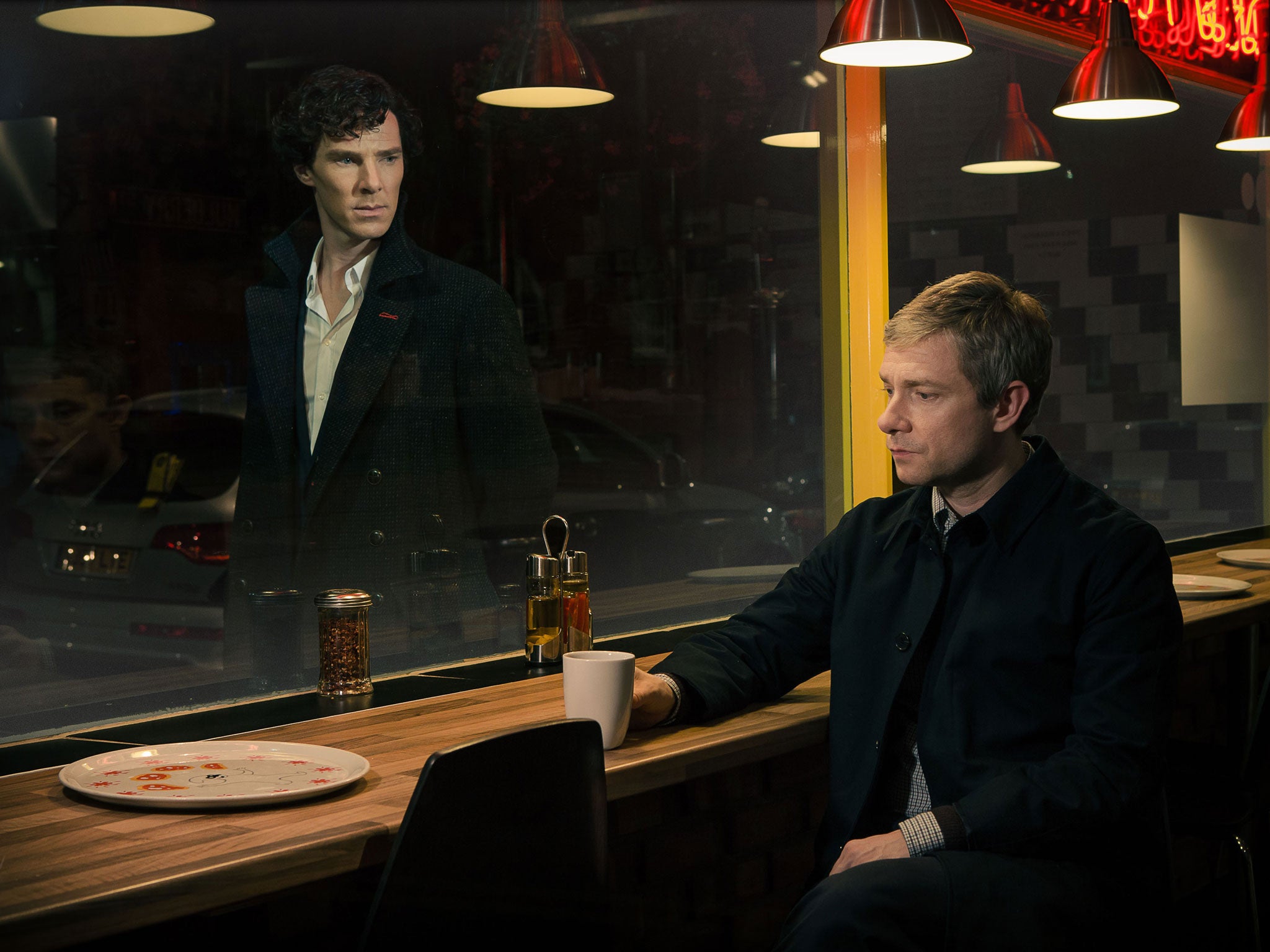Sherlock Holmes: Boy story bromance
The fine bromance between Sherlock Holmes and Watson has gripped TV viewers but, says Patrick Strudwick, it's less about sex and more about love between straight men

Your support helps us to tell the story
From reproductive rights to climate change to Big Tech, The Independent is on the ground when the story is developing. Whether it's investigating the financials of Elon Musk's pro-Trump PAC or producing our latest documentary, 'The A Word', which shines a light on the American women fighting for reproductive rights, we know how important it is to parse out the facts from the messaging.
At such a critical moment in US history, we need reporters on the ground. Your donation allows us to keep sending journalists to speak to both sides of the story.
The Independent is trusted by Americans across the entire political spectrum. And unlike many other quality news outlets, we choose not to lock Americans out of our reporting and analysis with paywalls. We believe quality journalism should be available to everyone, paid for by those who can afford it.
Your support makes all the difference.As portmanteaus go, "bromance" – the gentle insertion of "bro" into "romance" – is certainly one of this year's most uttered. And no wonder. Screenwriters today are scarcely able to sketch out a male protagonist without serving up a loyal sidekick to muddy the waters between buddy and hubby.
Even a distracted viewer of the BBC's Sherlock cannot have failed to notice a crackle in the air between Benedict Cumberbatch's clipped, waspish Holmes and Martin Freeman's doe-eyed, dependable Watson. That crackle, however, come New Year's Day's transmission, will burn into full-blown bromance.
Sunday's preview screening of the first episode in the third series might have answered the mystery of how our lead survives his suicidal rooftop plunge, but it also stoked the electric tension forming the central question of the hit drama: what exactly is the nature of the relationship between Holmes and Watson?
One attendee at the screening was Jonathan Ross, who noted that the programme's writers were "acknowledging a lot of the real-world fan reaction, not just what happened [to Sherlock] and how it was going to be resolved, but also the sexual tension between Watson and Holmes", which, he said, was "played with in a really fun way… with people speculating and getting very excited about that side of their relationship".
But, given the demographic anxieties fuelling prime-time productions, it would seem in this, as with most bromances, it is all chum and no bum. The drama lies in the characters not lying together. Bromance, we see again and again, is nothing to do with gay men – and everything to do with straight ones. This might surprise those who point to the gay men writing the stuff. Mark Gatiss authored this opening episode, and has also written for Doctor Who, which was resurrected by Russell T Davies, who clinched fame with 1999's Queer as Folk, only to come up with an interplay between the Doctor and Captain Jack Harkness so compelling that the latter character enjoyed his own spin-off in Torchwood.
But Brits are not the only ones who love a bromance. Breaking Bad, the critical hit of 2013, deployed a double-stranded central theme, entwined liked post-coital lovers: the moral decline of Walter White, and whether or not he would sacrifice his sidekick Jesse Pinkman. In the climactic episode (SPOILER ALERT!), Walt rescues Jesse – saving him as he himself lies dying. Shakespeare would steal this plotline quicker than a poppers-racing pulse.
How far we have come since the 1970s, when Morecambe and Wise lay side-by-side in bed, watched by a nation so green as to fail to see anything blue. And how far we have come since the 1980s, when the homoerotic frisson between the unerringly heterosexual Tom Cruise and Val Kilmer, as Maverick and Iceman in Top Gun, went unacknowledged.
To read these relationships, however, as some sort of gay conspiracy would be to miss the point – the societal plot. The morphing phenomenon of bromances merely traces the role and identity of heterosexual men. Not for nothing did the Sherlock writers respond to fans' interest. We want to see platonic male love, albeit with a few arched eyebrows, because we need to see it played out. And we need this because to adhere to gender norms means, for straight men, not expressing affection for male friends, not opening up and being intimate, and not even, as one utterly metrosexual straight male friend of mine admitted, eating out with another man. (A group is fine – they're just lads on the lash.)
The bromance, it transpires, is the acknowledgement, finally, of the other love that dare not speak its name: that between heterosexual men. The continuing depiction of which is no Sherlockian mystery; it reminds us only that it hasn't changed – we have.

Watch Apple TV+ free for 7 days
New subscribers only. £8.99/mo. after free trial. Plan auto-renews until cancelled

Watch Apple TV+ free for 7 days
New subscribers only. £8.99/mo. after free trial. Plan auto-renews until cancelled
Video: Mark Gatiss on 'Sherlock' return
Join our commenting forum
Join thought-provoking conversations, follow other Independent readers and see their replies
Comments